
The Remote Part is the third studio album by Scottish rock band Idlewild, released on 15 July 2002 by Parlophone. As they were becoming increasingly aware of their label's interest in them and their demos, the band's musical direction was being steered by guitarist Rod Jones. For the first half of 2001, the band recorded songs with producers Stephen Street and Lenny Kaye. Due to the uneven nature of the songs done between tours, they spent some time reworking 20 tracks in the Scottish Highlands. They recorded at Rockfield Studios in Wales, RAK Studios in London, and Sawmills Studios in Cornwall with producer Dave Eringa. Described as an alternative rock and indie rock record, it lacked the punk rock elements of their previous work.

In Our Gun is the third studio album by English rock band Gomez, released on 18 March 2002 by Hut Records.

Hope Is Important is the debut studio album by Scottish rock band Idlewild, released 26 October 1998 through Food Records. After finalizing their line-up and releasing two singles in 1997, the band released their mini album Captain in early 1998. Afterwards, the band signed with Food Records, and recorded their debut album between February and June 1998 at Chapel Studios in Lincolnshire and Westland Studios in Dublin with producer Paul Tipler. Described as a grunge and punk rock album, Hope Is Important was compared to Bleach (1989) by Nirvana.

Meltdown is the fourth studio album to be recorded by the Northern Irish rock band Ash. The album was released on 17 May 2004 through Infectious Records and Home Grown. Following the success of their third studio album Free All Angels (2001), Ash debuted several new songs while touring throughout 2003. By October that year, they had travelled to Los Angeles, California, to record a follow-up album, which was co-produced by Nick Raskulinecz and the band. Recording sessions were held at Sound City Studios in Van Nuys and at Chalice Studios, Hollywood. Meltdown, which is described as a hard rock album, drew comparisons to the work of The Smashing Pumpkins and critics said the guitar work resembles that of Black Sabbath and Metallica.

Liquid Skin is the second album by English rock band Gomez, released on 13 September 1999 by Hut Records. Following the release of their debut studio album Bring It On (1998), the band began recording its follow-up between August 1998 and June 1999 at Parr Street Studios in Liverpool, and Abbey Road Studios in London. The band were allowed to self-produce the sessions after their label heard the strength of their demos. Described as a blues rock album, Liquid Skin was compared to the work of Beck, the Grateful Dead, and Pearl Jam.

Bleed American is the fourth studio album by American rock band Jimmy Eat World, released on July 24, 2001, by DreamWorks Records. The album was re-released as Jimmy Eat World following the September 11 attacks; that name remained until 2008, when it was re-released with its original title returned.

"Kids" is a duet between singers Robbie Williams and Kylie Minogue, released as the second single from Sing When You're Winning, Williams' third studio album, and the third single from Light Years, Minogue's seventh studio album. Williams and his then songwriting partner Guy Chambers co-wrote the song for Minogue.
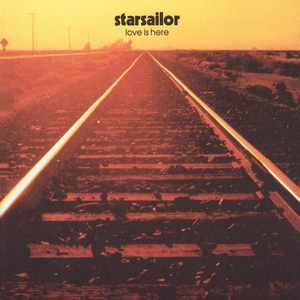
Love Is Here is the debut studio album by rock band Starsailor, released on 8 October 2001 by Chrysalis Records. After finalising their line-up, a positive review from NME started a bidding war between record labels that eventually saw the band sign to EMI. Following the making of some demos, "Fever" and "Good Souls" were released as singles on 4 February 2001 and 23 April 2001, respectively. The band recorded their debut album at Rockfield Studios with producer Steve Osborne over the course of six weeks. Love Is Here features acoustic guitars accompanied by gentle piano chords, earning it comparisons to the albums Parachutes (2000) by Coldplay, and The Invisible Band (2001) by Travis.

Drawn from Memory is the second album by English rock band Embrace, released on 27 March 2000 by Mobetta, Hut, and Virgin Records. Following the release of their debut studio album The Good Will Out (1998), touring keyboardist Mickey Dale became an official member. Frontman Danny McNamara began suffering from writer's block, leaving guitarist Richard McNamara to handle the writing. Sessions were done at Batsford Park Manor in Gloucestershire, Olympic Studios in London, and Soundworks Studios in Leeds. Tristin Norwell and the band producer the entire album, bar "You're Not Alone", which was produced by Hugo Nicolson. Songs on the album centred around the arrangements and the interplay between instruments, instead of being melody-driven.
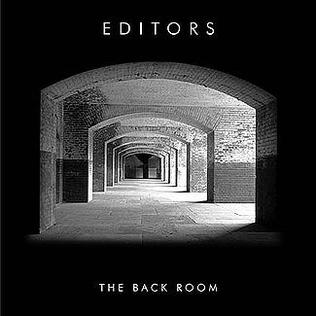
The Back Room is the debut studio album of British rock band Editors; it was released on 25 July 2005 through Kitchenware Records. The Editors formed while attending university and later moved to Birmingham, where they played club shows and made demos. After signing to Kitchenware in late 2004, the band recorded their debut album at studios in Lincolnshire, London and Wolverhampton. Jim Abbiss, produced all but one of the tracks; the exception was produced by Gavin Monaghan The Back Room is a post-punk revival, gothic rock and indie pop album that has been compared to the works of Echo & the Bunnymen, Elbow and Interpol.
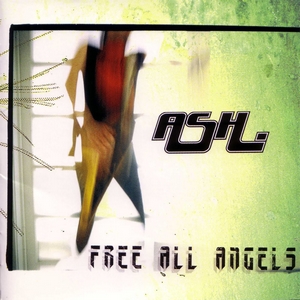
Free All Angels is the third studio album to be recorded by Northern Irish rock band Ash. It was released on 23 April 2001 through Infectious Records and Home Grown. Due to the mixed reaction to the band's second studio album Nu-Clear Sounds (1998), frontman Tim Wheeler suffered from depression. He went to his parents' house in Northern Ireland to write material for the band's next album. Free All Angels was co-produced by the band and Owen Morris, and recording sessions were held at El Cortijo in Puerto Banús, Spain, then moved to The Wool Hall in Beckington and RAK Studios in London. The album was described as pop punk, power pop and punk rock, and drew comparisons to the works of China Drum, Compulsion, Hüsker Dü, and the Replacements.
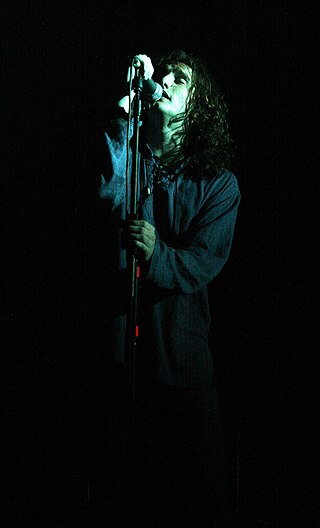
The Music were an English alternative rock band, formed in Kippax, Leeds in 1999. Comprising Robert Harvey, Adam Nutter, Stuart Coleman (bass) and Phil Jordan (drums), the band came to prominence with the release of their self-titled debut album in 2002. The band released two further studio albums, Welcome to the North (2004) and Strength in Numbers (2008), before parting ways in 2011.
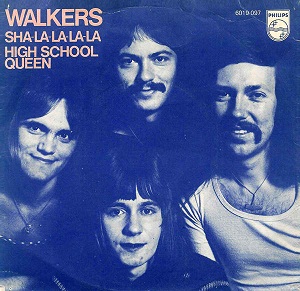
"Sha-La-La-La-La" is a song by Danish glam rock band Walkers. The song was co-written by band members Torben Lendager and Poul Dehnhardt. It entered the Danish charts at number eight in the last week of March 1973, and peaked at number two after three weeks, after which it disappeared from the charts. The song achieved worldwide exposure after being covered by Dutch Eurodance group Vengaboys.
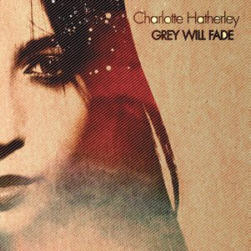
Grey Will Fade is the debut studio album by English musician Charlotte Hatherley, the guitarist for Ash, released by Double Dragon Music on 16 August 2004. Spurred on by the positive response to "Grey Will Fade", which appeared as a B-side to Ash's single "There's a Star" (2001), Hatherley set about recording her solo album. Enlisting the help of Eric Drew Feldman, the sessions for the album were happening concurrently in Los Angeles, California, at Wild Hamster, while Ash was recording their album Meltdown (2004). Described as a pop punk and power pop record, Hatherley's vocals on Grey Will Fade earned her comparisons to Björk, Tanya Donelly, and PJ Harvey.

"We're Going to Ibiza!" is a song by Dutch Eurodance group Vengaboys. It was released in March 1999 as the second and final single from their second studio album, The Party Album (1999). Based on Typically Tropical's 1975 number-one hit "Barbados", the song reached number one on the UK Singles Chart in September 1999, becoming the group's second number-one single there. Outside the UK, the song also reached number one in the band's native Netherlands and became a top-five hit in Flanders, Norway, and Sweden.

Myths of the Near Future is the debut album by English rock band Klaxons. It was released on 29 January 2007 through Polydor Records. Following their debut single, the band coined the term "new rave" to refer to their sound; not long after their second single, they signed to Polydor Records. They recorded their debut album with James Ford of Simian Mobile Disco at The Premises and Parkgate Studios. Myths of the Near Future, which takes its title from a poem, is a science-fiction concept album about the future; its sound recalled the dance-punk works of Bloc Party and Franz Ferdinand. Some of the song's titles and lyrics are literary references to the works of J. G. Ballard, William S. Burroughs and Thomas Pynchon.
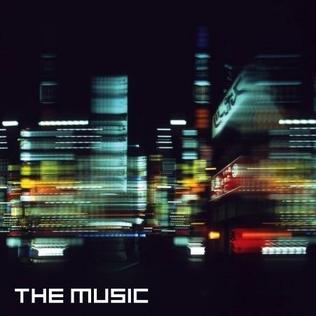
Strength in Numbers is the third and final studio album by English rock the Music. It was released on 16 June 2008 by Polydor Records and Yes, Please!.

The discography of British rock band Athlete comprises four studio albums, two live albums, one compilation album, fourteen singles and three extended plays (EP). They formed in 2000 with a line-up consisting of vocalist and guitarist Joel Pott, bassist Carey Willetts, keyboardist Tim Wanstall and drummer Steve Roberts.
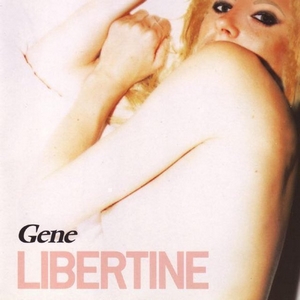
Libertine is the fourth studio album by English rock band Gene. It was released on 22 October 2001 though their own label Contra. After departing from their previous label Polydor Records in 1999, the band spent sometime writing material. Their next album was recorded across various studios in Lincolnshire, Twickenham and London. Hugh Jones served as the producer on nearly all of the songs, bar one that was produced by Stephen Street. Libertine focusses on piano instrumentation, taking influence from soul music, namely What's Going On (1971) by Marvin Gaye.
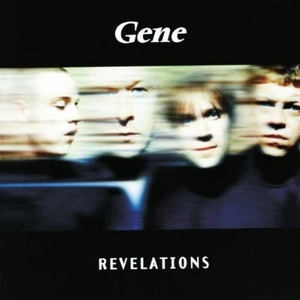
Revelations is the third studio album by English rock band Gene. It was released on 1 March 1999 through Polydor Records. When they released their second studio album Drawn to the Deep End in 1997, it was a commercial success, but did not meet the label's expectations. Polydor was hesitant about letting them record another; sessions were mainly held at Rockfield Studios in Rockfield, Wales with producer Hugh Jones. The band produced one song at Maison Rogue in London. Revelations was compared to the band's debut studio album Olympian (1995), though lacked the Smiths influence found there. A few of the songs criticize British politicians, such as Tony Blair.





















